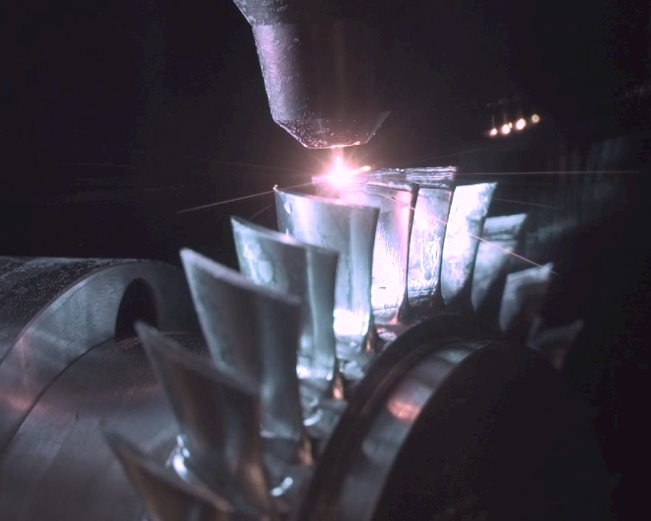TOWARDS A LEANER AND GREENER AVIATION INDUSTRY
The Covid-19 pandemic hit the aviation industry hard. One minute the demand for air travel was so high that aircraft manufacturers couldn’t make and deliver planes fast enough; the next, the airlines, aircraft manufacturers and suppliers saw business collapse overnight as the world went into lockdown. Nearly two years later, the industry is still recovering, and it’s not guaranteed to hit the heights it did before. The aviation industry also faces another challenge that has an even greater bearing on its future: sustainability.More efficient engines; lighter but stronger new materials: the aviation industry’s transition to sustainability will test aircraft manufacturers’ abilities to the full. Rachid M’Saoubi, R&D Expert for Cutting Technology in Seco Tools’ Material and Technology Development Department, explains more.
The Covid-19 pandemic hit the aviation industry hard. One minute the demand for air travel was so high that aircraft manufacturers couldn’t make and deliver planes fast enough; the next, the airlines, aircraft manufacturers and suppliers saw business collapse overnight as the world went into lockdown. Nearly two years later, the industry is still recovering, and it’s not guaranteed to hit the heights it did before.
The aviation industry also faces another challenge that has an even greater bearing on its future: sustainability. In line with global commitments to the fight against climate change, the aviation industry has pledged to become carbon-neutral by 2050. How do we transform aeroplanes into a sustainable, carbon-neutral form of transport?
In the next few years, new aircraft will have more efficient engines consisting of more advanced components, made of lighter but stronger materials to enable better combustion and airflow. Airframe structures will be made of even lighter composites and metallic materials, such as a new generation of aluminium-lithium alloys. Today, landing gear components increasingly contain stronger titanium alloys, such as Ti-5553 or Ti-10-2-3.
All of these developments will test manufacturers’ and their suppliers’ abilities to the full because they will have to adapt to working with different, harder, more difficult-to-machine materials. They will also have to ensure they are as productive and profitable as possible after the business lost to Covid. And, as always, they will have to ensure that defects are minimal, so the planes are safe to fly.
“Today, we use a lot of steel and other metallic alloys including aluminium, titanium and nickel, and certain materials have a high density. Steel alloys are being replaced with other materials such as advanced titanium alloys and advanced aluminium alloys, which have a better strength-to-weight ratio. Because if you want to be more efficient and sustainable in your fuel consumption, you also need to reduce the weight of the structure.”
The transition to these materials is already underway. M’Saoubi estimates that about 50 per cent of the weight of a Boeing Dreamliner jet structure consists of composites, for example, carbon-fibre reinforced plastics.
Aircraft manufacturers can only meet the challenges of more sustainable and efficient materials if their suppliers do too. Seco Tools is a major provider of tooling solutions for machining aircraft components. It has a particularly strong offer for aeroplane pylons, the connections between the airplane and its engine (link to other article) and blisks, the bladed disks in the engine compressor that allow enough compressed air to get into the engine to allow combustion to occur.
 “We design our tooling so that the machine surface we deliver to the customer satisfies the surface integrity requirements,” says Rachid M’Saoubi.
“We design our tooling so that the machine surface we deliver to the customer satisfies the surface integrity requirements,” says Rachid M’Saoubi.
“We develop cutting tool solutions that minimise the damage to the machined surface. When we machine a nickel-based alloy turbine disk, a titanium casing or a titanium blade, the aeroplane engine manufacturer will only accept our tooling and our cutting recommendation after a stringent safety qualification process.”
“Traditionally, machining a blisk means removing a lot of metal, and if part of the blisk component has been damaged in service, there’s usually a welding repair procedure, which uses a lot of energy and subsequent adaptive machining to restore the blisk airfoil,” he adds.
Near Net-Shape Manufacturing is about getting the component as near as possible to its final size and weight in the initial machining phase. Examples of this include Wire Arc Additive Manufacturing, using an arc welding process to 3D print metal parts, Selective Laser Melting, using a bed of powder with a heat source to create metal parts, and Directed Energy Deposition, where feedstock material in the form of a powder or wire is delivered to a substrate on which an energy source such as laser beam, electron beam, or plasma/electric arc is simultaneously focused - this creates a small melt pool and continuously deposits the material, layer by layer.
These new technologies are all able to reduce material waste and dramatically shorten lead times for part deliveries from weeks to a matter of a few days. The use of cutting fluids in machining is giving way to near-dry machining methods including ScCO2 (Super Critical Carbon Dioxide), which removes the risk of contaminants and again contributes to a more sustainable approach.
It’s a challenging new era, but Rachid M’Saoubi says Seco Tools can support the aviation industry as it adapts.
“We have developed a strategy for tackling those challenges, from the drawing board to the final product. We want to put the customer at the centre of the process and collaborate with the manufacturers and others technology providers in the supply chain to find ways of minimising waste and increasing productivity. We are well prepared for the way ahead.”
Contact us here